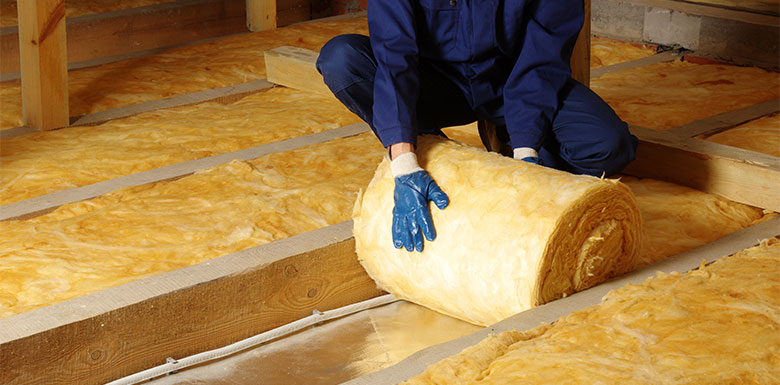How to start your insulation business
 In this article
In this article
- What qualifications do you need to become an installation installer?
- What services can your insulation business offer?
- What are the different types of home insulation options?
- Essential tips for starting an insulation business
- How to build customer trust with your business
- Boost your business as a Which? Trusted Trader
Many homeowners are constantly looking for ways to keep their energy costs low and their houses warm during those colder nights – especially with fuel prices still being relatively high – and one of the best ways to do this by investing in proper home insulation!
One of the most cost-effective and environmentally friendly ways to keep homes warm, starting your own insulation business or offering an insulation installation service to your customers is a fantastic way to expand your service offering and grow your business.
Read on for our top tips on how to start your insulation business from scratch.
With gas boilers being phased out as part of the government’s Net Zero strategy, most homeowners will need to switch to low-carbon heating systems, such as heat pumps and solar panels. And since these work best in well-insulated homes, demand for insulation will only increase further..
Stats show that UK homes alone produced 17% of the UK’s carbon emissions in 2022 – mostly from gas used for heating, providing hot water, and cooking – so making homes more energy efficient is essential if the government is to achieve its aim of reaching net zero by 2050.
What qualifications do you need to become an insulation installer?
Depending on what stage of your career you’re at, there are three paths you can follow to become an insulation installer:
- Taking college courses
- Joining an apprenticeship scheme
- Applying for a job directly
Naturally, if you already work in the building trade and have relevant knowledge and skills to install insulation correctly, there are a number of NVQ (NVQ) courses you can take to boost your skills further and demonstrate to customers that you have insulation expertise.
These courses include six Level 2 Insulation and Building Treatments NVQs covering:
- Wood preserving and damp proofing
- Wall tie replacement
- Cavity wall insulation
- Solid floor insulation
- Under floor insulation
- Cold roof insulation.
There are also eight Level 3 NVQs you can take if you have existing knowledge and skills at a higher level. These include:
- Room in roof
- Park homes
- Hybrid wall
- Insulating framed sections of buildings
- External wall insulation – finisher
- External wall insulation – boarder
- External wall insulation – boarder and finisher
- Internal wall insulation
Do I need training to become an insulation installer?
While not a legal requirement, it is absolutely essential that you get the necessary qualifications required to become a trained insulation installer. Homeowners want to know that the tradesperson they're hiring knows what they’re doing, and there’s no better way to show this than with core qualifications from credited UK schemes.
Best of all, by qualifying to become an insulation installer, you can partner with Which? to become one of our Trusted Traders – so your customers know that your business is reputable and reliable.
Become a Trusted Trader
When customers see you displaying our logo, they'll know you're a trader they can trust
Find out more
What services can your insulation business offer?
When it comes to providing insulation services, there are a range of insulation options that can be used to retrofit homes to make them more energy efficient. These include:
- Cavity wall insulation – homes built after the 1920s but before the 1990s are likely to have cavity walls with no wall insulation. This means that insulation material needs to be injected into the cavity through drilled holes, which are then sealed to prevent heat from escaping.
- Solid wall insulation – homes built before the 1920s are likely to have solid walls, meaning cavity wall insulation cannot be injected inside. However, it’s still possible to insulate these walls internally or externally for greater heat retention.
- Floor insulation – the ground floor of homes or the floors above unheated spaces, such as garages, can be insulated to keep more heat in by laying insulation between the joists of suspended timber floors, while concrete floors can have rigid insulation boards laid on top.
- Roof and loft insulation – plenty of heat in the home is lost through the roof, but insulation can be laid over and between the joists in traditionally shaped lofts, with another layer on top, to make the insulation deep enough to minimise heat loss. Meanwhile, flat roofs can be insulated from above with rigid insulation boards.
- Draught proofing – gaps, such as around doors, windows, and up open chimneys, can be blocked up to stop unwanted cold air from getting in and warm air escaping. And while many homeowners choose to draught-proof their homes themselves, many new homeowners are turning to professionals for their draught-proofing needs.
What are the different types of home insulation options?
When it comes to picking the various insulation materials you can provide to your customers, there are a number of different options you can choose from, including:
- Fibreglass insulation – made from fine glass fibres, fibreglass is an affordable insulation option that is also fire-resistant.
- Cellulose insulation – created from recycled paper and plant fibres, cellulose has good thermal resistance and is an excellent eco-friendly insulation option.
- Mineral wool insulation – developed using natural mineral materials, mineral wool shares similar fire-resistant properties to fibreglass though tends to be more expensive.
- Reflective insulation – made using reflective surfaces, this type of insulation is designed to directly reflect heat back into homes without the need for thick insulative padding,
- Rigid foam board insulation – an excellent insulation option for floors and roofs, this type of foam insulation is made from rigid boards formed from a range of heat-resistant materials.
- Spray foam insulation – a popular form of foam insulation, this material can be used to insulate roofs, lofts, walls, and floors instead of traditional insulation materials. However, spray foam insulation has a number of drawbacks that you should make customers aware of before using it. Find out more in our guide on spray foam insulation.
Essential tips for starting an insulation business
Alongside becoming a qualified insulation installer, there are several key areas you’ll need to consider if you’re thinking of starting your insulation business from the ground up. These include the following:
1. Essential business elements
When starting any business, it’s important that you think about and invest in all the following areas:
- A business plan – crucial to any new business, creating a business plan is a must-have requirement for getting any initial funding or loans you might need to get your business off the ground.
- Getting CSCS qualified – while not needed for typical homeowner work, if you plan on working on construction sites, then it is a legal requirement to have a registered CSCS card.
- Business insurance – although unlikely, should an unforeseen problem occur that requires material and tool replacement, or legal payments of any kind, it’s always a good idea to have the right insurance in place to cover these costs.
2. Legal requirements
When setting up any business in the UK, it is a legal requirement for you to do both of the following:
- Registering your business – all UK businesses must be registered with HMRC for tax purposes.
- Choosing a business structure – when setting up your business, you will need to decide whether or not you will be classed as a sole trader or limited company.
- Naming your business – it’s not possible for your business to operate without a legally recognised name.
3. Marketing
Nowadays, good business marketing is the cornerstone of business growth, particularly for new businesses just entering the market. So, before you start your new insulation business, make sure you’ve invested in the following areas of marketing:
- Online marketing – this includes having a social media presence to display your work, signing up for the Google My Business listings, inquiring into PCP marketing, creating a website, and optimising it for SEO purposes.
- Traditional marketing – although not as relevant as it used to be, traditional marketing like brochures, emails, and local business ads should still form part of your overall marketing strategy.
- Becoming a Trusted Trader – one of the best ways to get noticed by customers is to become a certified Trusted Trader with Which?, highlighting your business as a consumer-friendly and highly qualified company.
4. Using government schemes
As part of the net zero mission, the UK government has launched two key schemes to help homeowners, landlords, and tenants improve the insulation of their properties, which you can take advantage of. These include:
- The Great British Insulation Scheme – launched in September 2023, this scheme offers free or cheaper insulation measures for consumers, including cavity wall, roof, and loft insulation, for households in lower council tax bands with an Energy Performance Certificate rating of D or below.
- The Home Upgrade Grant – this grant offers support to off-the-grid homes that do not rely on a gas boiler to heat their homes, and have an EPC rating of D to G. Support can range from insulation and draft proofing to new windows and doors, as well as the installation of heat pumps and solar panels.
Both of these schemes build on the Energy Company Obligation (ECO), which requires the largest energy companies to help certain households on lower incomes with the financial cost of energy-saving measures, such as installing insulation and boiler replacement, and can provide you with further opportunities for insulation work.
How to build customer trust with your business
As we’ve mentioned many times, in order to get established in the insulation installation business and increase your success in this area it’s important that potential customers trust you.
Naturally, having qualifications is one way to do this, but you can also boost your reputation by providing a great service every time so previous customers recommend you to others. Word-of-mouth marketing is still a powerful tool in the trade industry and should not be underestimated.
On top of this, building a rapport, being responsive to customer needs, and being transparent at all stages of the process will also help you build trust with homeowners. And if something does go wrong, you should look to do everything you can to put things right as quickly as possible.
Finally, good reviews will go a long way to convincing many potential customers to choose you over your competitors, so building up a decent number of these will go a long way towards boosting your insulation business. Ask satisfied customers to leave reviews and always respond to any negative ones that have been posted.
Boost your business as a Which? Trusted Trader
With all of those points covered, you should have all the information you need to get started with setting up your insulation business. Naturally, establishing any new business will take time and effort, however, you can improve your odds of gaining new customers by signing up with Which? to become one of our Trusted Traders!
At Which?, we don’t just endorse anyone, and all of our Trusted Traders are extensively vetted to show our customers that we only give the Trusted Trader logo to the best of the best.
And by signing up as a Trusted Trader, you won’t just benefit from using our logo. Our team will provide you with a dedicated account manager to offer advice and support, access to our wellness and legal helpline, and even a dedicated profile page where you can display previous work and reviews.
Get in touch today to find out more about our Trusted Trader process, and don’t forget to visit our advice guides hub to find other informative articles like this one!




